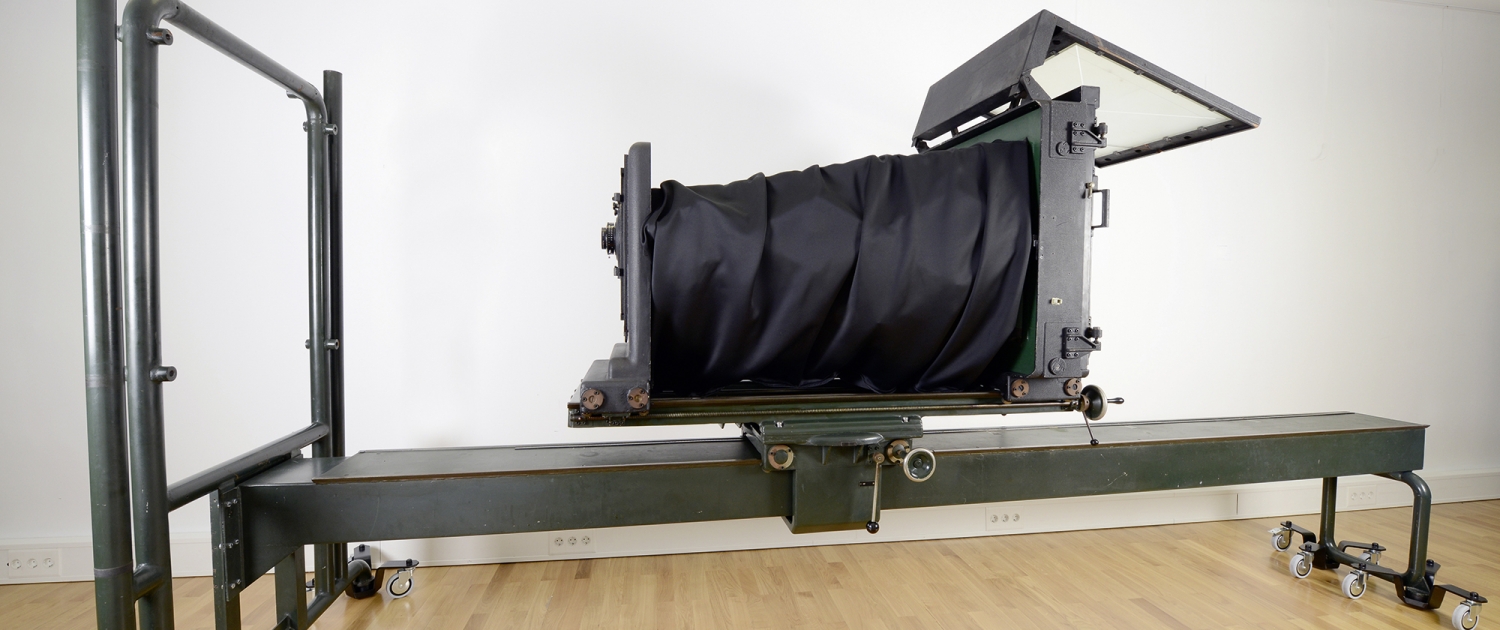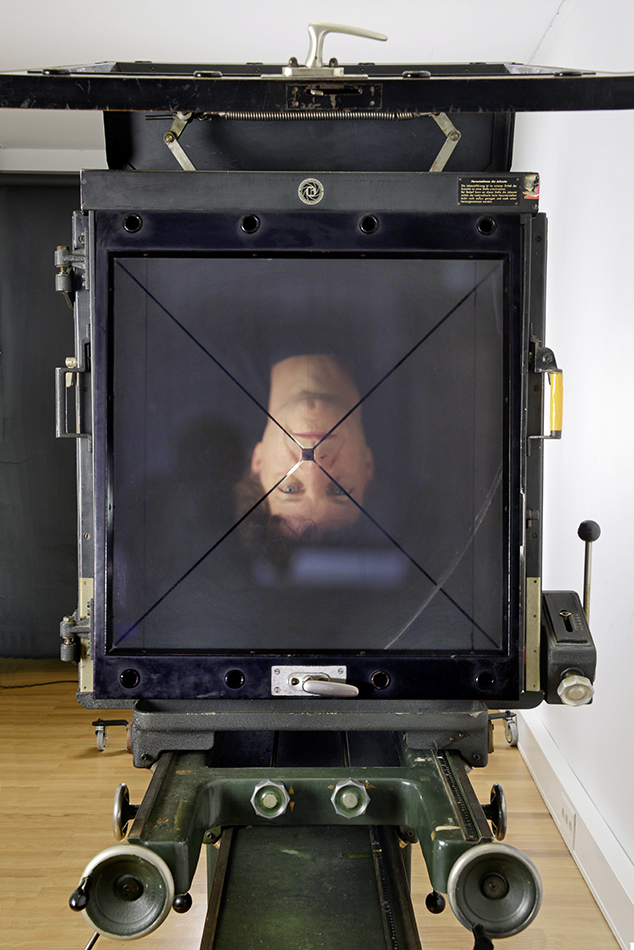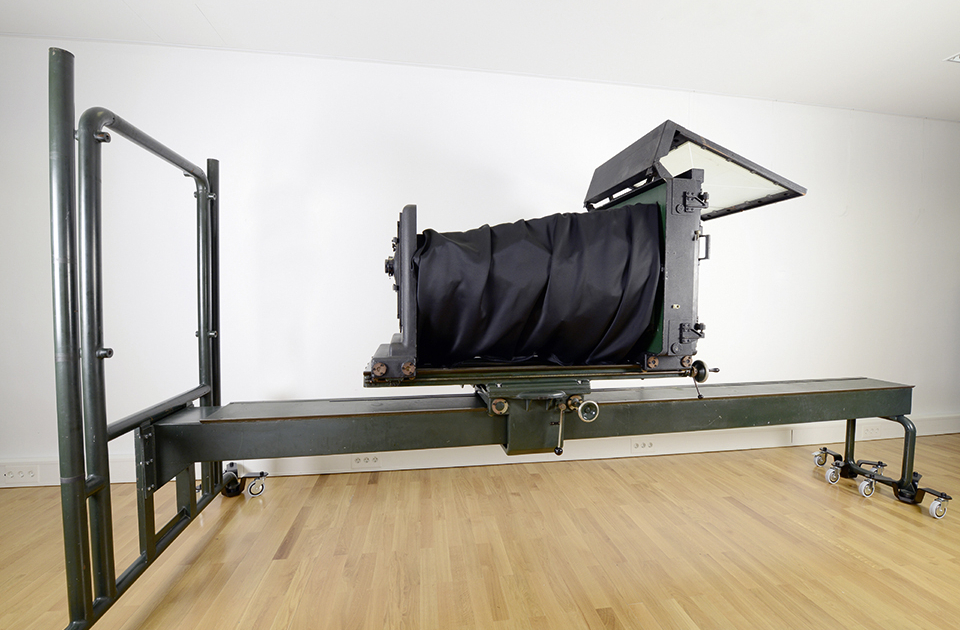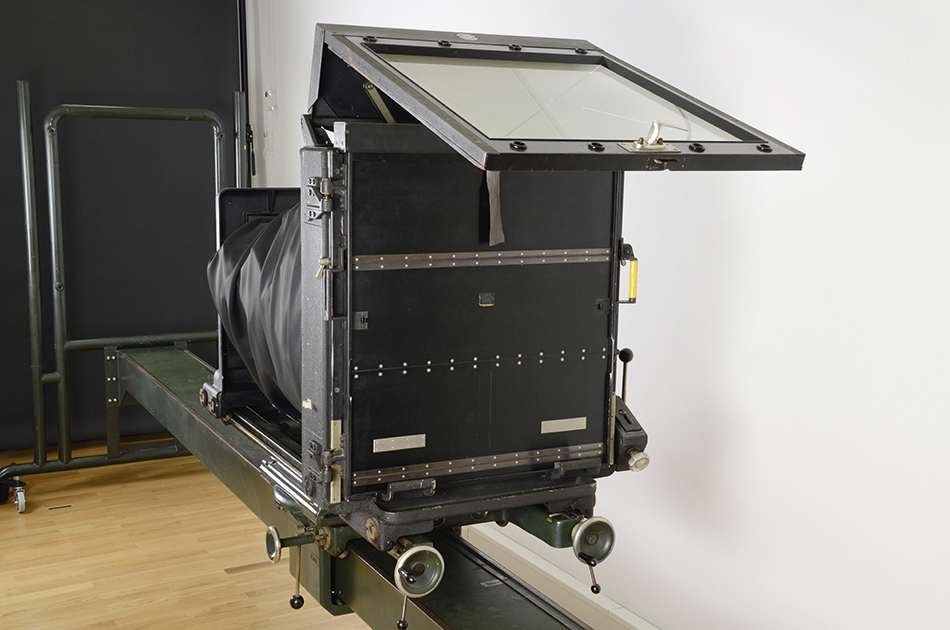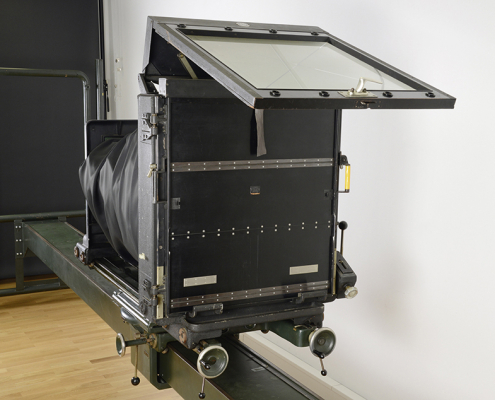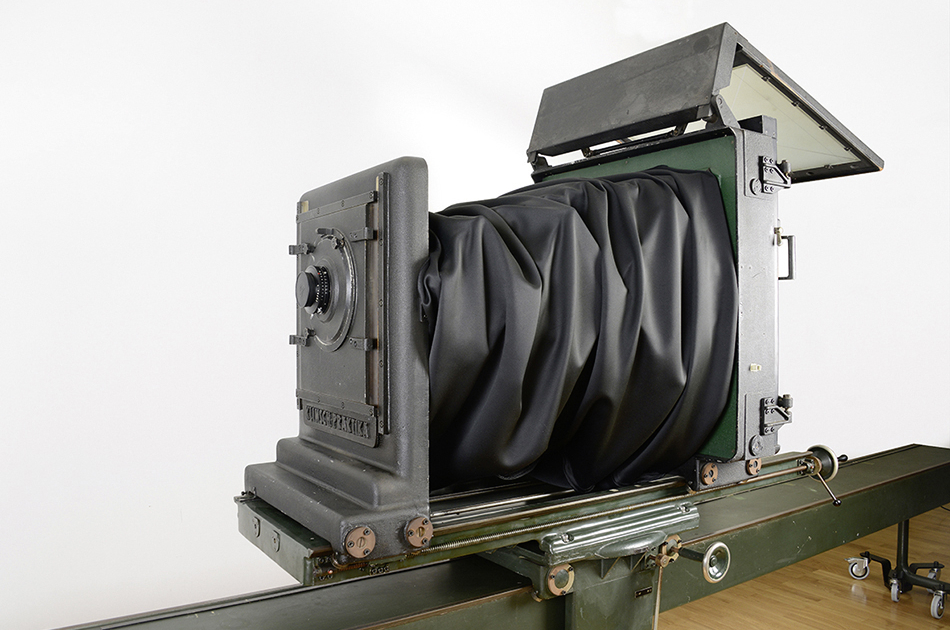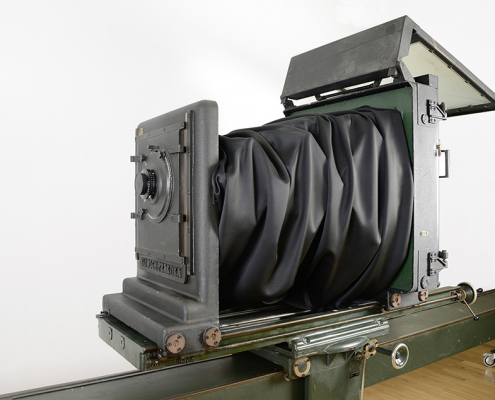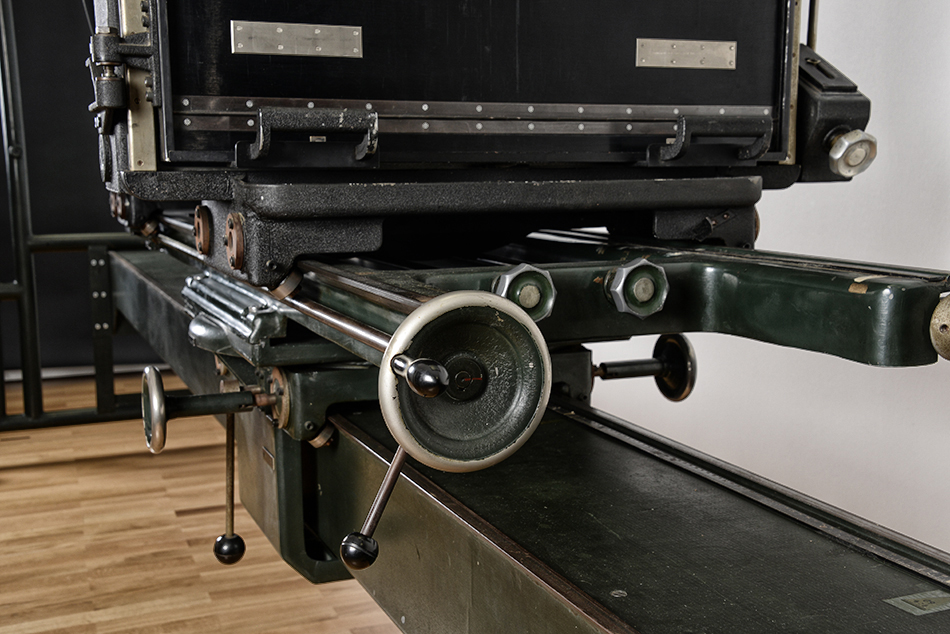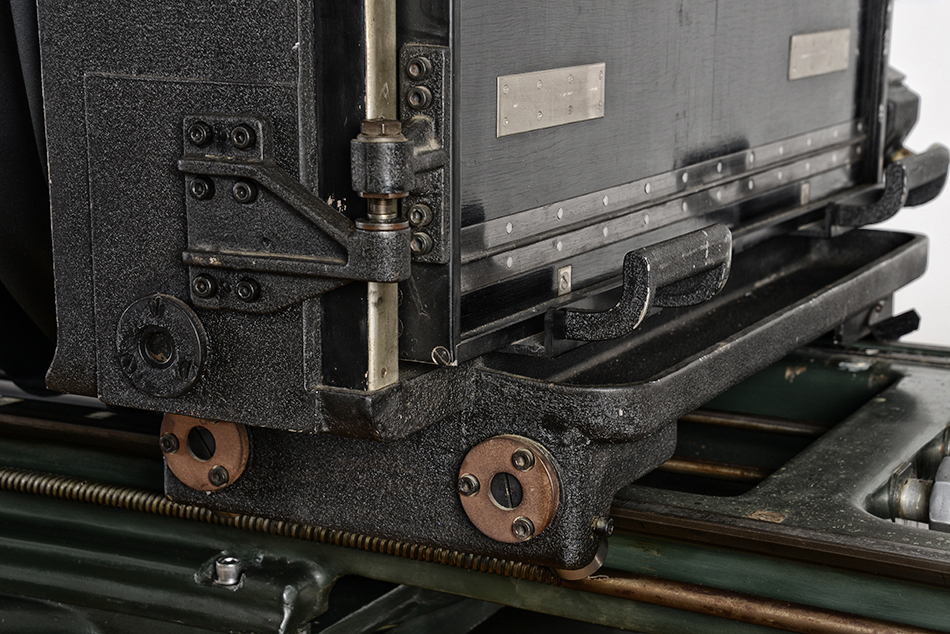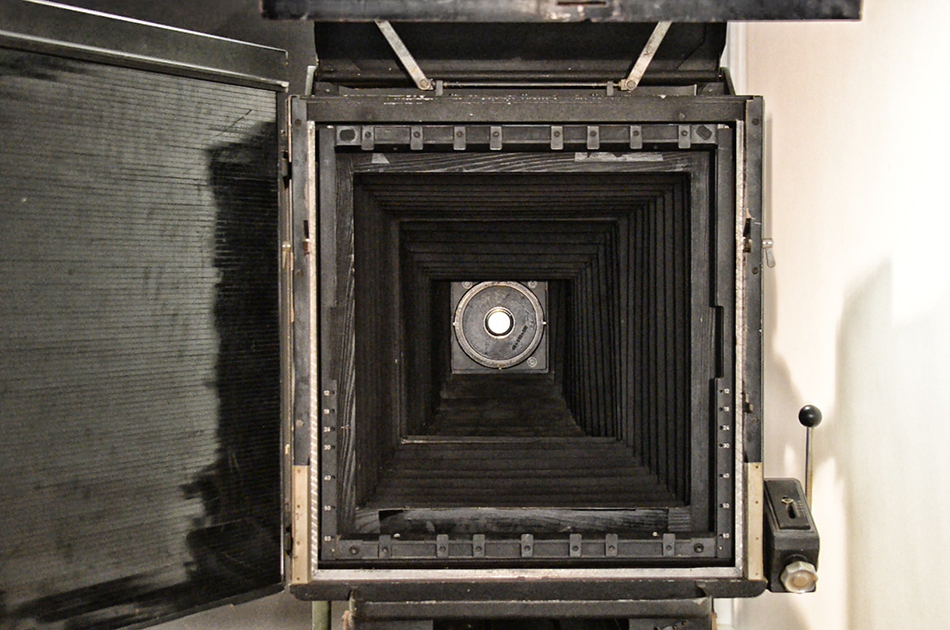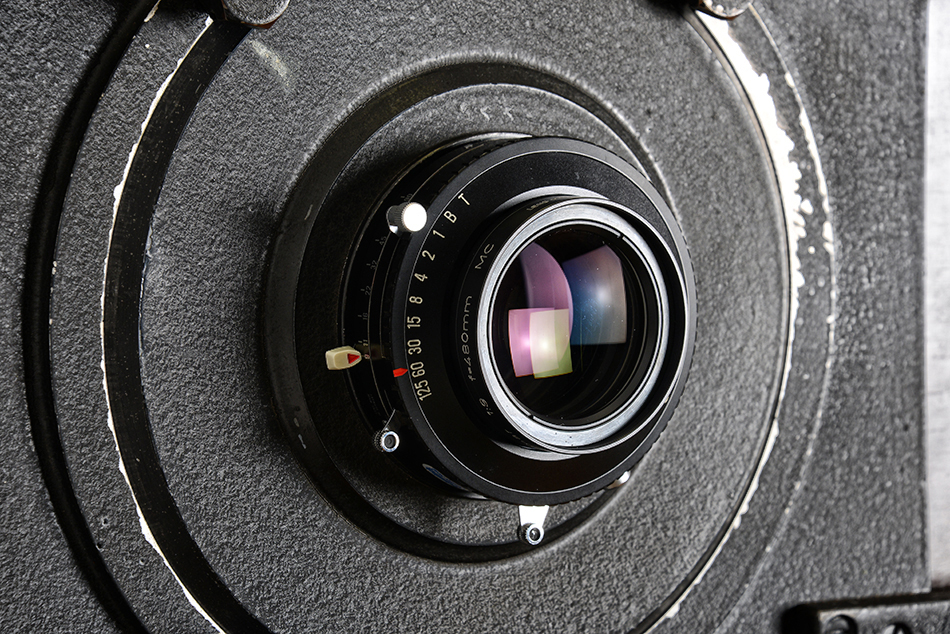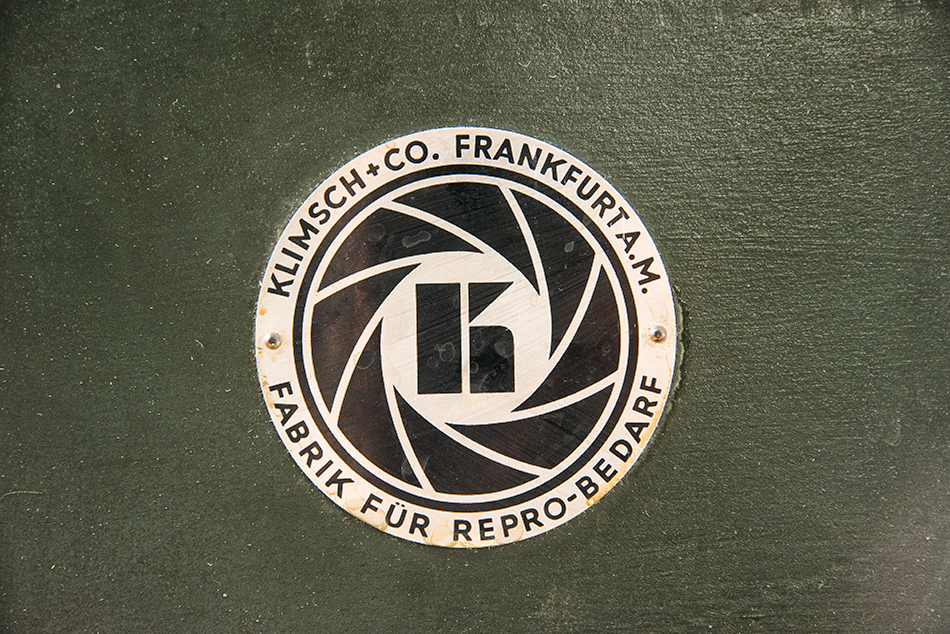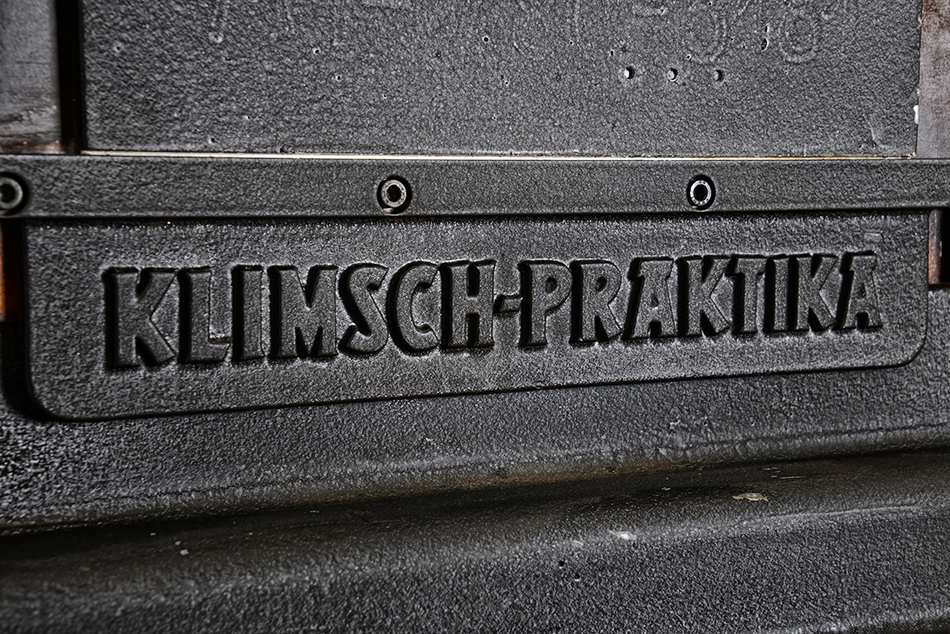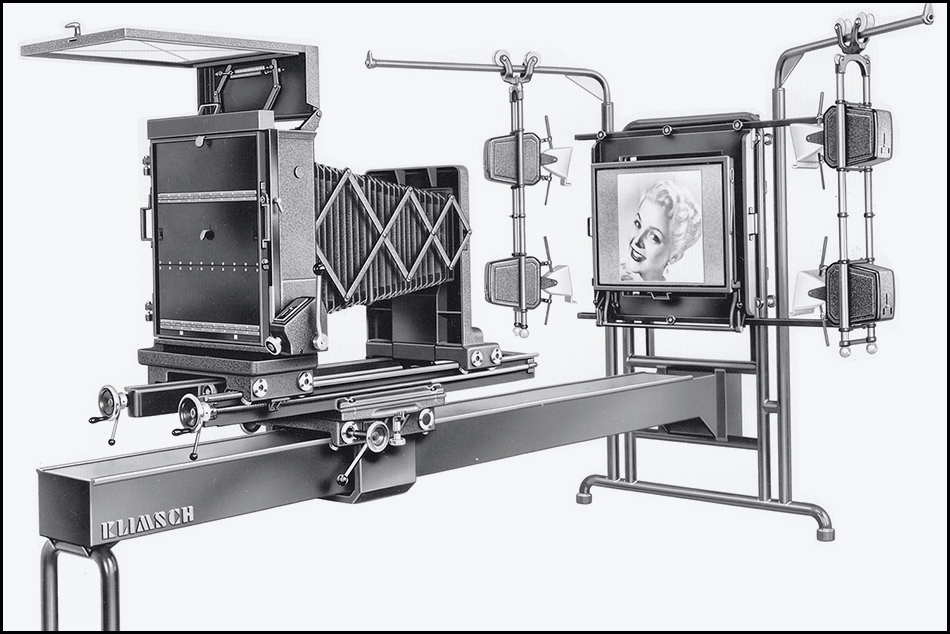Klimsch Praktika Reproduction / Process Camera
Reproduction / process cameras were in use until the mid-eighties to create print films. From the print film a metal plate was etched and applied to a printing cylinder to produce offset or gravure printings. With the introduction of digital imaging the repro / process camera became obsolete, being replaced by scanners and digital cameras.
Josef Dreisörner discovered the camera in a printing house in 2015. The camera, which had been disassembled and stored there, was transported to Munich, cleaned and partially restored. Due there was no blueprint he reassembled the camera in a trial and error process.
This Klimsch Praktika is one of the last repro / process cameras still in use. It could be saved from scrapping and was painstakingly re-assembled in a combined effort and brought back to life.
In portrait photography, it is necessary to communicate and have constant eye contact with the model through the view finder. One must also be able to change the camera perspective quickly. A repro /process camera is therefore actually not suitable for portrait photography because of its construction, size, weight, bulkiness and the lack of a viewfinder.
.
Engineering data
– Producer: Klimsch + Co. Frankfurt, West-Germany
– Year of construction: 1957
– Camera type: Klimsch Praktika, Reproduction / Process Camera
– Single-room camera
– Film Format: 60×60 cm (20×24 INCH)
– Lense: Klimsch Apo-Ronar f=600 mm
– Height: 2,1 m
– Length: 4,2 m
– Width: 1,4 m
– Total weight: 650 kg
Josef Dreisörner – Photographic & Imaging Art
c/o Dreisörner Werbeagentur GmbH
Kaulbachstr. 61, 80539 Munich, Germany
+49 89 688 6778
info@josef-dreisoerner.de

